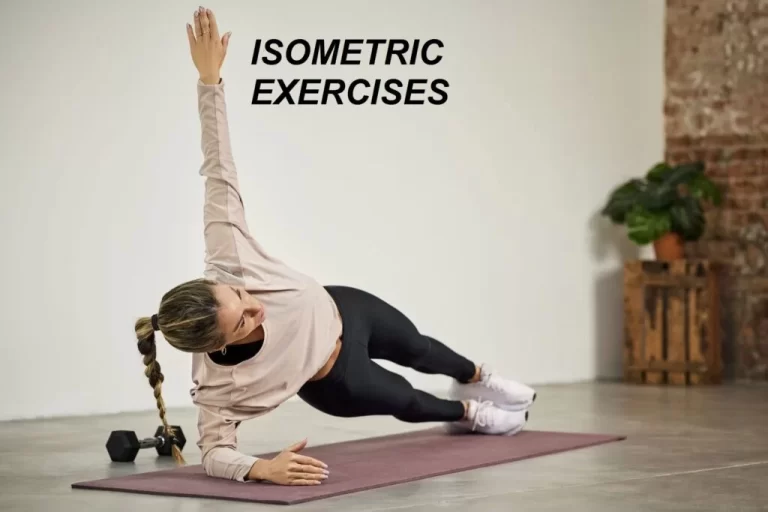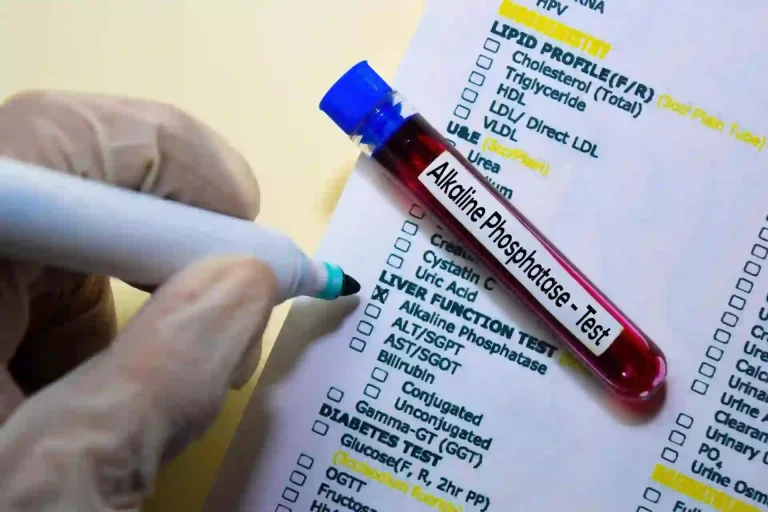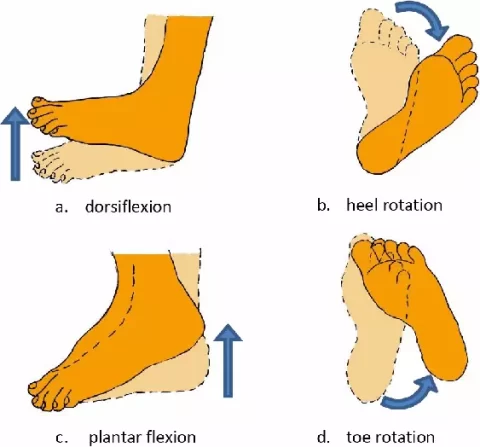Shoulder Adduction
What is Shoulder Adduction?
Shoulder adduction is a fundamental movement of the shoulder joint where the arm moves toward the body’s midline. This motion is essential for various daily activities and athletic movements, allowing tasks such as pulling, reaching across the body, and stabilizing objects.
Shoulder Horizontal Adduction
When doing shoulder horizontal adduction, the arm should be straight out in front of the body. The hand and shoulder should be parallel. While keeping the hand and arm at shoulder height, bring the arm closer to the body’s midline.
Shoulder Adduction Muscles
Shoulder adduction involves four key muscles:
- the pectoralis major
- coracobrachialis
- latissimus dorsi
- teres major.
Shoulder Adduction ROM
Usually, shoulder adduction has a normal range of motion (ROM) of 10 to 50 degrees.
Benefits Of Shoulder Adduction Exercise
There are several advantages to shoulder adduction exercises, such as:
- Shoulder adduction exercise can help relieve discomfort in the neck and shoulders.
- Shoulder adduction exercises can improve upper-body and chest muscular strength.
- The risk of injury can be decreased with shoulder adduction exercises, particularly for those who undertake repetitive overhead motions.
- Exercises for shoulder adduction can enhance performance in sports requiring lifting, throwing, or swinging actions.
- Improved posture expands the chest, increasing lung capacity and enabling deeper, more effective breathing.
- Greater Mobility in the Shoulders.
Shoulder Adduction Pain
If you have discomfort when you adduct your shoulder, your Acromioclavicular Joint may be faulty. Your doctor can perform a specific test called the Cross-Arm Test to determine whether you have a positive result and then prescribe the appropriate course of therapy.
Shoulder Adduction Test
The Cross-Arm Test is a shoulder adduction test that determines whether the Acromioclavicular Joint is malfunctioning. Ask the patient to lift their damaged arm to a 90-degree angle in front of them. The arm should be brought across your body. If the test makes you uncomfortable, it is positive.
Shoulder Adduction Stretching
- Place your hand from the stretched side on the opposite shoulder. Your elbow should be pointed away from the body. Raise your elbow as near to shoulder height as possible.
- Gently press the lifted elbow onto the opposite shoulder with your other hand. Keep your gaze fixed on something. When you feel the strain, come to a stop. Hold the stretch for five seconds.
- Work up to three sets of this stretch three times each day, to hold the stretch for 30 to 60 seconds each.
Note:
Avoid pushing your elbow up toward your chin and press it across your chest instead. Gradually pushing your elbow deeper across your chest may improve the stretch.
Shoulder Adduction Exercise
Isometric Shoulder Adduction
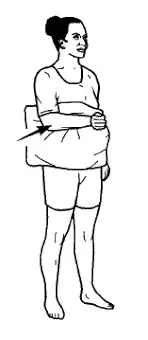
- Simple isometric exercises can help strengthen the shoulder adductor muscles.
- Place a cushion between your inner arm and chest, and then bend your right elbow to the side. The inside of your right palm should face up.
- Attempt to push your elbow closer to your body by pressing forcefully on the pillow.
- Hold this squeeze for 5-10 seconds before relaxing. The practice should be repeated ten times before moving on to the left arm. Begin by squeezing with 25% of your effort, and as it becomes easier, advance to 100%.
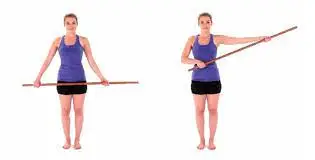
Wand exercise for shoulder adduction
- standing erect, tall, and straight.
- Allow the stick to rest on your thighs. Use one arm to push the other as high and out to the side as possible while maintaining a straight elbow position. Hold the stretch for a five-count. Ten times over, repeat.
Strengthening Exercise For Shoulder Adduction
Exercise with a Resistance Band

- To develop the shoulder’s adductor muscles, perform this exercise with an elastic band.
- Place one end of an elastic band in the door. Stand with your right side facing the entrance and your right arm at shoulder level. Use your right palm to hold the other end of the band in place.
- Bring your arm to your side gently and without bending your elbow.
- Hold your right hand for a few seconds.
- Then release
- Repeat this process ten times before on to the left arm.
Shoulder Fly
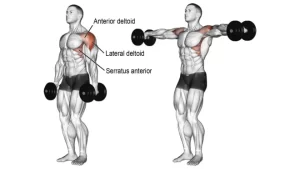
- This exercise strengthens the pectoralis major muscle, which aids in shoulder adduction.
- When you lie on your back, maintain your arms at shoulder level. Keep a weight in each hand, palm up, elbows slightly bent.
- Slowly draw your palms together until they make contact with the middle of your chest.
- After one to two seconds of keeping this stance, lower the weights to the ground. There are ten repetitions necessary before a break.
- Begin with a little weight (5 to 10 pounds) and gradually raise it as you feel more comfortable.
Shoulder Adduction With Cable
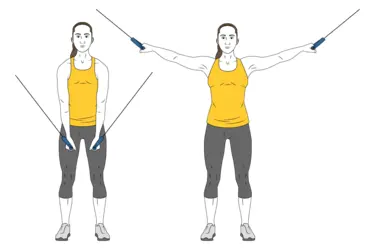
- Place the pulleys over your head. Choose the appropriate resistance from the weight stack. You should be at the center of the pulleys, so grab their handles. Your elbows should be slightly bent, your hands somewhat beneath your shoulders, and your arms should be aligned. To get a more secure stance, place one foot in front of you. Tighten your pelvic floor and core.
- Exhale, then bring the handles toward your hips using your chest and back muscles. Return to the beginning posture with a smooth inhalation.
Note: The key to exercise is quality over quantity. The secret is to complete the exercise with good technique. The lines of your arms and pulleys should always be the same. While performing the exercise, only move your shoulder joint; do not move any other parts of your body. In the beginning, concentrate on calm, controlled movement.
Manual Muscle Testing: Shoulder Adduction
GRADING
Grade – 5 (normal): Reach the end of the range and exert as much resistance as possible.
Grade- 4 (good): A whole range can be reached but it requires a high level of resistance.
Grade: 3 (fair): Physical resistance is not necessary for a full range of motion.
Grade 2 (Poor): Full partial range of motion is available.
Grade-1 (Trace): There is no obvious osteokinematic movement or muscle or tendon contraction.
Grade 0: means there is no osteokinematic movement, muscle contraction, or tendon contraction.
The grades are:- 5 (Normal), 4 (Good), and 3 (Fair).
POSITION OF THE PATIENT: Supine with elbow flexed at 90° and shoulder abduction to 90°
CLAVICULAR HEAD: Shoulder abduction at 60 degrees with elbow flexion. The patient is then taught to horizontally adduct his or her shoulder.
STERNAL HEAD: With elbow flexion, abduct the shoulders to 120°
THERAPIST POSITION:
- The therapist is positioned on the test side.
One Hand: contoured around the forearm just above the wrist joint.
Other Hand: utilized to assess pectoralis major activity on the upper chest immediately medial to the shoulder joint.
Instructions to the Patient
Put your arm over your chest. Hold it and do not let me pull it back.
CLAVICLAR HEAD: lift your arm up and in.
STERNAL HEAD: Move your arm downwards and in.
Grade – 5 (normal): Reach the end of the range and exert as much resistance as possible.
Grade- 4 (good): A whole range can be reached but it requires a high level of resistance.
Grade 3 (fair): Physical resistance is not necessary for the full range of motion.
Grade- 2 (Poor), Grade-1 (Trace), Grade- 0
POSITION OF THE PATIENT: The patient is sitting with the test arm supported on the table, in 90 degrees of abduction, and the elbow slightly flexed.
THERAPIST POSITION: Stand to the side of the patient’s shoulder being tested or behind the patient who is sitting.
One Hand: contoured around the forearm just above the wrist joint.
Other Hand: utilized to assess pectoralis major activity on the upper chest immediately medial to the shoulder joint.
Instructions to the Patient: Attempt to move your arm across your chest while seated, then forward.
Grade 2 (Poor): Provides a full partial range of motion.
Grade-1 (Trace): There is no obvious osteokinematic movement or muscle or tendon contraction.
Grade 0: There is absence of osteokinematic movement, muscle, or tendon contraction.
FAQs
What does shoulder adduction work?
In the coronal plane, move the upper limb closer to the midline.
Should you train shoulder adduction?
By including adduction motions into your workouts regularly, you may improve your chest muscles while also improving total upper body strength.
What nerve is involved in shoulder adduction?
The musculocutaneous nerve extends down the front of the humerus, providing function to the Coracobrachialis, biceps, and brachialis muscles.
What is the main shoulder adduction?
The pectoralis major, latissimus dorsi, and teres major are the primary muscles involved in shoulder adduction.
What is the normal range of shoulder adduction?
Depending on flexibility and body composition, a typical range of motion for shoulder adduction is 30 to 50 degrees.
References:
- Patel, D. (2023a, June 9). Shoulder Abduction and Adduction – Muscles, Exercise, R.O.M. Samarpan Physiotherapy Clinic. https://samarpanphysioclinic.com/shoulder-abduction-and-adduction/
- shoulder adduction benefits – Google Search. (n.d.). https://www.google.com/search?q=shoulder+adduction+benefits+&sca_esv
- CABLE ADDUCTION – Exercises, workouts, and routines. (n.d.). https://www.workoutsprograms.com/exercises/cable-adduction


